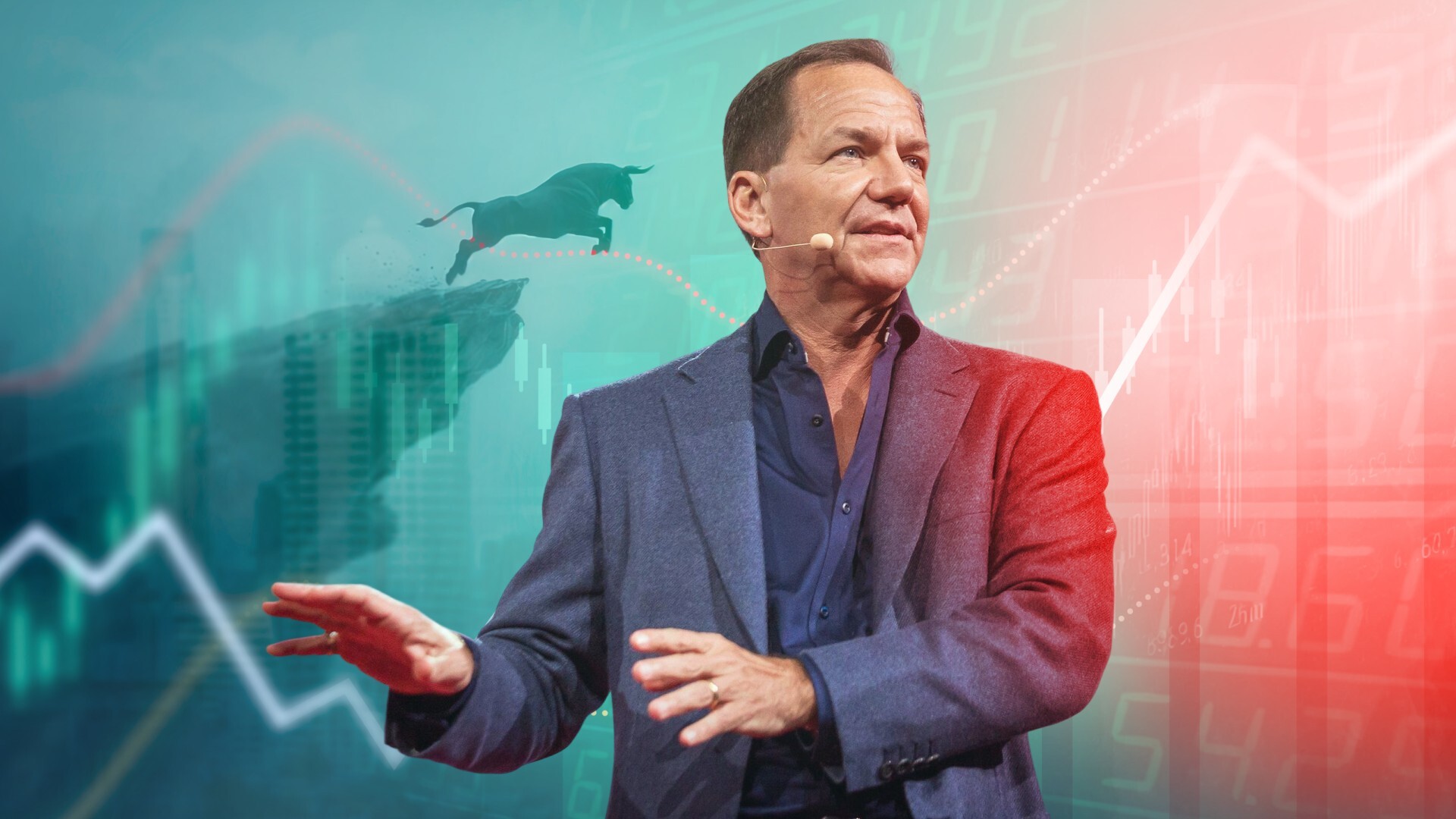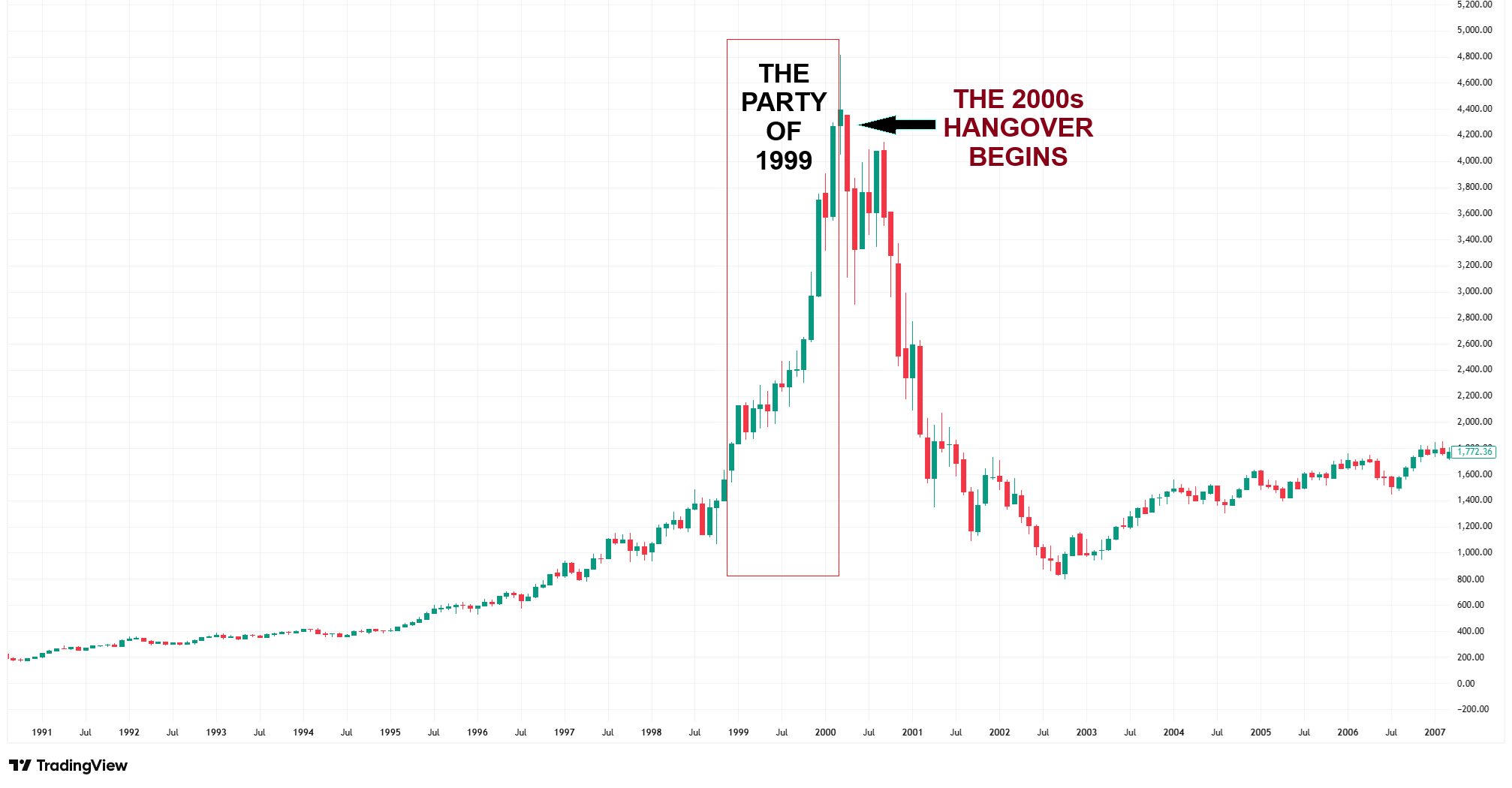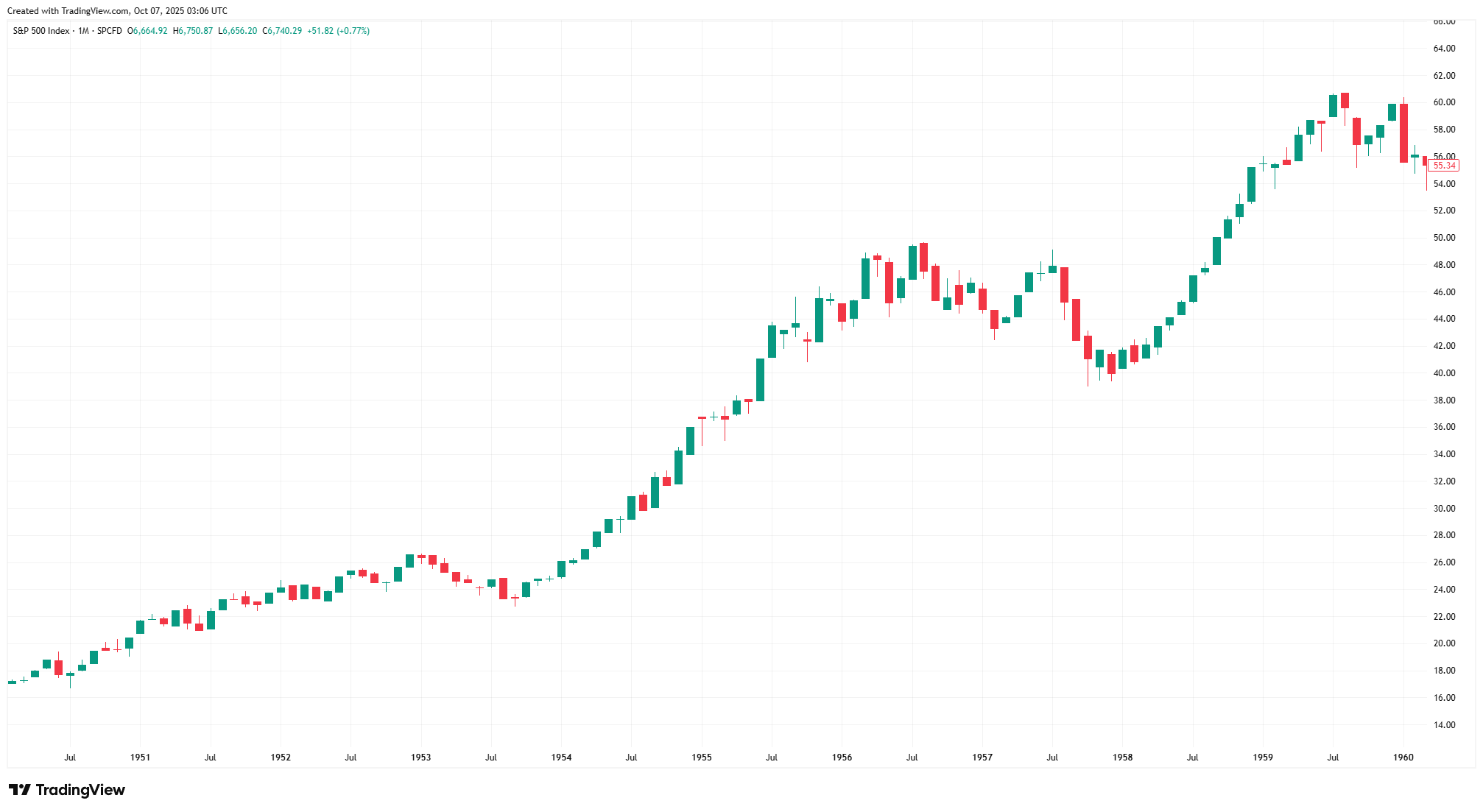"It feels exactly like 1999’: Paul Tudor Jones sees one last run before the mania ends

Legendary hedge fund manager Paul Tudor Jones says investors are entering a “party like it’s 1999” phase, a period of euphoric price appreciation driven by loose monetary and fiscal policy that could end badly, but not before delivering explosive gains for those willing to dance near the fire.
In a wide-ranging CNBC interview, the billionaire trader - famed for predicting the 1987 crash and consistently reading the macro tea leaves - said all the ingredients are in place for a speculative blow-off top reminiscent of the dot-com bubble.
“It’s like the Prince song - it’s 1999, party like it’s 1999, right? It feels exactly like 1999,” says Jones, the founder of Tudor Investment Corp.
Between October 1999 and March 2000, the NASDAQ doubled. Jones thinks investors could see something similar over the next few quarters - provided they have what he calls “happy feet.”
“I don’t know whether we’ll actually replay it exactly, but I think all the ingredients are in place, and certainly from a trading standpoint, you have to position yourself like it’s October of ’99," he says.
“And remember,” he added, “the Nasdaq doubled between the first week of October ’99 and March of 2000. So it looks like a duck and quacks like a duck - it’s probably not a chicken, right?”

“You have to play it - but be ready to run”
Jones’ message is both exhilarating and unnerving. He says the final leg of a bull market often produces the biggest returns, but also the hardest fall.
“If you just think about bull markets, the greatest price appreciation is always the 12 months preceding the top,” he says.
“If you don’t play it, you’re missing out on the juice. If you do play it, you have to have really happy feet because there will be a really, really bad end to it.”
He believes this cycle could be even more explosive than 1999 because, unlike then, central banks are easing - not tightening - and governments are running massive deficits instead of surpluses.
Back then, the U.S. was on the verge of a rate hike; now it’s heading for three or four cuts, with real interest rates heading toward zero.
"That fiscal monetary combination is a brew that we haven’t seen since the postwar period ... and those were crazy times after the war," says Jones.

The winners of the final melt-up (and the exit plan)
If he’s right, the coming months could see “massive price appreciation across a variety of assets.”
And Jones isn’t shy about which ones he likes:
- Gold — “up 46–47% this year” and still rising as investors hedge against debasement.
- Bitcoin — “up 50–60%” and the spiritual heir to gold for the digital era.
- Nasdaq — “the fastest horse” for momentum players.
- Retail-driven trades — including meme-stock baskets, which Jones noted are up nearly 70%.
"I'd want to have a combination of gold, crypto and the Nasdaq. I’ve said that before, and I think that’s still the right one. And I think whatever the fastest horse is at this point in time probably has a good chance of being that on 31 December," he says.
Jones likened the current market to a race - one that professional investors can’t afford to lose as they close out the year. With performance measured on a calendar-year basis, he believes managers will keep chasing momentum to finish strong.
His setup is simple: as long as liquidity keeps flowing, momentum rules. The 200-day moving average remains his guidepost.
"Nothing good ever happens under the 200-day moving average in any asset so when the market changes, I am going to change with it, simple," says Jones.
“The biggest bubble we have is sovereign debt”
Jones argues that today’s sovereign debt market is living on borrowed time.
Easy money and central-bank easing have “pulled forward” demand, leaving asset managers roughly US$500 billion overweight bonds as they rushed to front-run the coming rate-cut cycle.
The result, he says, is a bond market that looks calm on the surface but is being propped up by demand borrowed from the future.
But the global policy shift toward growth at any cost - from India and Korea to Germany and Japan - means deficits keep swelling beneath the surface. “It’s wild that we continue to go ahead,” he says. “Probably England’s the only place… where you’re going to experiment with austerity.”
For Jones, it’s as if the world’s fiscal ship has gone off-map.
“I feel it’s a bit like Star Trek — we’re boldly going where no man has ever gone before,” he says.
He warns that once the easing cycle ends and the wave of pulled-forward demand subsides, markets will face a daunting reality: trillions in new debt supply, fewer natural buyers, and bond vigilantes finally waking from hibernation.
“AI is taking us where no one’s steering the ship”
Jones says AI is a double-edged sword: massive productivity gains on one side, social and environmental disruption on the other.
And while 83% of Americans view it as a net positive, he warns that corporations are under-investing in safety and governance.
“Companies spend just a quarter of 1% of total AI spend on safety. The public thinks it should be 5% or more," he says.
Without a “Captain Kirk or a Spock” guiding policy, he fears the AI revolution could amplify inequality and volatility even as it drives markets higher.
“Every crisis is a function of too much leverage”
Jones says leverage remains the ultimate indicator of when the party ends. Today’s speculative tools - from leveraged ETFs to retail trading apps — have replaced old-school margin debt, but the dynamic is the same.
“Every crisis is a function of too much leverage in the system. When you throw in leveraged ETFs, we’re probably more elevated than October ’99. My guess is we’ll exceed that," he says.
His advice to investors? Ride the wave - but know when to jump off.
“It won’t last forever. When the easing stops, the hangover begins," says Jones.
The bottom line
Jones hasn’t lost his instinct for bold, clear calls.
In 2020, he told investors to “own the fastest horse” — and Bitcoin, gold, and the Nasdaq delivered.
Five years later, his message rhymes with history:
- Play the rally, but respect the risk.
- Follow the price, not the politics.
- And when it feels like the party is about to end - make sure you know where the exits are.
Until then, keep partying like it's 1999:
5 topics

